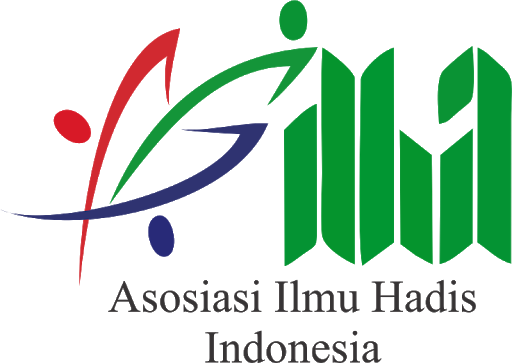Dehumanization of Women by Da'iyah (Media Contest in Religious Lectures)
DOI:
https://doi.org/10.14421/livinghadis.2022.3979Keywords:
Dehumaniasi Perempuan; Da'iyah; Doktrin AgamaAbstract
The dehumanization of women in the religious framework in the media is in the form of defining women as "free" human beings. The narrative is strongly framed because it is socialized by the da'i (male) and the da'iyah. There have not been many studies that have paid attention to the substance of religion, how the da'iyah (women preachers) are actively and massively involved in delivering their da'wah material which translates women, not as creatures that need to be humanized based on religious doctrine through the lectures of three da'iyah Mamah Dedeh (Dedeh Rosdiana); dr. Aisyah Dahlan and Dr. Oki Setiana Dewi through the youtube channel in six contents. Three questions were posed: (1) How are (religious) values regarding the dehumanization of women presented in religious lectures in the media; (2) How is the role of da'iyah in influencing the dehumanization of women; (3) How is the media contestation in religious lectures that do not humanize women. Misinterpretations in the form of dehumanization of women by the da'iyah are generally caused by a literal, partial, and superficial reading of religious doctrines. Therefore, although it is realized that the ideology of the media is never in line with religious values that are humanist and full of moral messages, religious lectures in the media need to be studied carefully, so that religious messages that are "more humane for women" through the media are not denied.
 Abstract viewed: 317 times
|
Abstract viewed: 317 times
|
 pdf downloaded = 392 times
pdf downloaded = 392 times
References
Abbink, J. (2011). Religion in Public Spaces: Emerging Muslim-Christian Polemics in Ethiopia. African Affairs, 110(439), 253-274.
Ariffin, S. dkk. (2015). Module of Al-Quran Memorization According to Capability and Period. International Proceedings of Economics Development and Research, 83, 82-88.
Ballesteros, B. dkk. (2010). The Political Economy of Communication: Power and Resistance, An Interview with Vincent Mosco. Global Media Journal, 10(17), 1-17.
Carol, S. & Koopmans, R. (2013). Dynamics of Contestation Over Islamic Religious Rights in Western Europe. Ethnicities, 13(2), 165-190.
Dilger, H. & Schulz, D. (2013). Politics of Religious Schooling: Christian and Muslim Engagements with Education in Africa: Introduction. Journal of Religion in Africa, 43(4), 365-378.
Dinitto, R. (2011). Between Literature and Subculture: Kanehara Hitomi, Media Commodification and the Desire for Agency in Post-Bubble Japan. Japan Forum, 23(4), 453-470. DOI: 10.1080/09555803.2011.617460
Eid, R. & El-Gohary, H. (2015). The role of Islamic religiosity on the relationship between perceived value and tourist satisfaction. Tourism Management, 46, 477-488. DOI: 10.1016/j.tourman.2014.08.003
Faisal, Saud. (2015). Persepsi Guru Ummi SD Fastabiqul Khairat Samarinda Terhadap Tayangan Hafidz Indonesia di RCTI, eJournal llmu Komunikasi, 3 (4), 16-28.
Fitri, Alifa Nur ( 2015), Hafiz Quran as Guidance not only Spectacle, Ragam Jurnal Pengembangan Humaniora, 15 (1), 41-47.
Muhamad. (2016). Komodifikasi Cermin Retak Agama di Televisi Perspektif Ekonomi Politik Media, INJECT: Interdisciplinary Journal of Communication. 1 (1), 25-42.
Ferdinan. (2018). Pelaksanaan Program Tahfidz Al-Qur’an (Studi Pesantren Darul Arqam Muhammadiyah Gombara Sulawesi Selatan). Jurnal Tarbawi, 3(1), 39-50.
Fahrudin Yusuf, Muhamad. (2016). Komodifikasi Cermin Retak Agama di Televisi Perspektif Ekonomi Politik Media, INJECT: Interdisciplinary Journal of Communication. 1 (1), 25-42.
El Fadl, Khaled M. Abou (2004). Atas Nama Tuhan dari Fikih Otoriter ke Fikih Otoritatif, terj. R. Cecep Lukman Yasin (Jakarta: Serambi, 2004), 304-307.
Fakih, M. Analisis Gender dan Transformasi Sosial (Yogyakarta: Pustaka Pelajar, cet. Ke-7, 2002),71-74
Frederiks, M.T. (2010). Let Us Understand Our Differences: Current Trends in Christian-Muslim Relations in Sub-Saharan Africa. Transformation, 27(4), 261-274.
Helbling, M. (2014). Opposing Muslims and the Muslim Headscarf in Western Europe. European Sociological Review, 30(2), 242-257.
Hidayah, N. (2016). Strategi Pembelajaran Tahfidz Al-Qur’an di Lembaga Pendidikan. Ta’allum, 4(1), 63-81.
Jennes, I. dkk. (2014). User Empowerment and Audience Commodification in a Commercial Television Context. The Journal of Media Innovations, 1(1), 71-87.
Kang, H. & McAllister, M.P. (2011). Selling You and Your Clicks: Examining the Audience Commodification of Google. TripleC, 9(2), 141-153.
King, R.R. (2016). Music, Peacebuilding, and Interfaith Dialogue: Transformative Bridges in Muslim-Christian Relations. International Bulletin of Mission Research, 40(3), 242-257.
Lubis, M.H. (2017). Efektivitas Pembelajaran Tahfizhil Al-Quran dalam Meningkatkan Hafalan Santri di Islamic Centre Sumatera Utara. Jurnal Ansiru PAI, 1(2), 67-73.
Marchione, R.C. (2009). Participatory Culture and Commodification in the Age of the “Digital Revolution”. (Thesis)
Migliore, D.L. (2008). The Love Commandments: An Opening for Christian-Muslim Dialogue? Theology Today, 65, 312-330.
Muhamad Fahrudin, Yusuf. (2016) Komodifikasi Cermin Retak Agama di Televisi Perspektif Ekonomi Politik Media, INJECT: Interdisciplinary Journal of Communication, 1 (1), 25-42.
Mosco, V. (2009). The Political Economy of Communication (2nd Ed). London: SAGE Publications.
Murdock, G. (2008). Commodification of the Media. Dalam W. Donsbach (Ed.), The International Encyclopedia of Communication, First Edition, pp. 1-5. New Jersey: JohnWiley & Sons, Ltd. DOI: 10.1002/9781405186407.wbiecc054
Nuraeni, Asri dkk. (2013). Komodifikasi Dai di Televisi: Kajian Ekonomi Politik Media, Jurnal Komunikator. 5 (2), 70-83.
Rozak, Abdur (2014), Pesan Dakwah Pada Anak Dalam Program Televisi (Analisis Semiotik Roland Barthes pada Program Televisi Indonesia 201.. Undergraduate thesis, UIN Sunan Ampel Surabaya.Web: http://digilib.uinsby.ac.id/2072/
Qadir, Z. (2014). Contestation of Religious Public Space: Christians Vs Muslims Cases in Papua. Borneo Journal of Religious Studies, 3(2), 233-247.
Ulfah, M. (2014). Kontestasi Komodifikasi Media Massa dan Ideologi Muhammadiyah. Jurnal ASPIKOM, 2(3), 165-178.
Wahyudin, A. (2017). Commodification Broadcast Television Program on Local Television in Bandung, West Java. SHS Web of Conferences, 33, 1-5. DOI: 10.1051/ shsconf/20173300069
Williams, R.H. & Valshi, G. (2007). Hijab and American Muslim Women: Creating the Space for Autonomous Selves. Sociology of Religion, 68(2), 269-287.
Downloads
Published
Issue
Section
License
Copyright (c) 2022 Nurun Najwah

This work is licensed under a Creative Commons Attribution-ShareAlike 4.0 International License.
- Authors who publish with this journal agree to the following terms:
- Authors retain copyright and grant the journal right of first publication with the work simultaneously licensed under a Creative Commons Attribution License that allows others to share the work with an acknowledgement of the work's authorship and initial publication in this journal.
- Authors are able to enter into separate, additional contractual arrangements for the non-exclusive distribution of the journal's published version of the work (e.g., post it to an institutional repository or publish it in a book), with an acknowledgement of its initial publication in this journal.
- Authors are permitted and encouraged to post their work online (e.g., in institutional repositories or on their website) prior to and during the submission process, as it can lead to productive exchanges, as well as earlier and greater citation of published work.
















